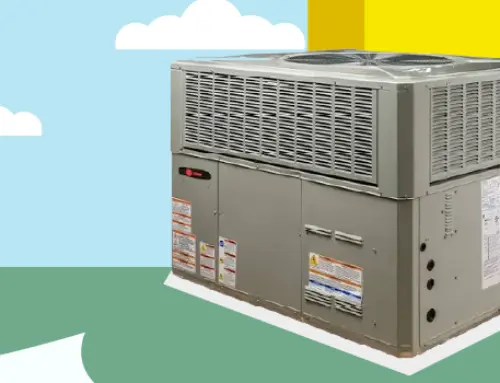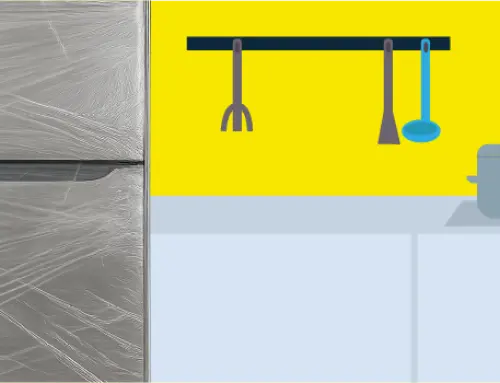What Is a Watt-Hour? How to Convert Watts, Kilowatts, Volts, and Amps
by Tyler Castle
15.6 min read

Understanding how watts, watt-hours, volts, and amps work together can make your electricity bill a lot less confusing. Whether you own or rent your home, knowing what a watt-hour is and how to measure electricity is helpful information to have when reviewing your monthly electricity bill.
As an energy supplier with over 35 years of experience, we know customers often have questions about how their usage is measured and billed. In this guide, we’ll break down what watt-hours are, why they matter, and how to convert between watts, kilowatts, volts, and amps so you can see how your energy use adds up and where you can save. Let’s get started.
Key Points of This Article:
- Watts show how hard your electricity is working at any moment.
- Watt-hours measure the total energy a device uses over time.
- Knowing watt-hours and kilowatt-hours helps you see exactly where your energy is going and what's driving your bill.
What Is a Watt?
Let's start with the most basic unit of measurement when it comes to electricity: the humble watt.
A watt (W) is a basic unit of power that tells you how quickly something uses energy at a given moment. Think of it as the speed of your home's electricity use. The higher the wattage, the faster a device is consuming power.
For example, a 100-watt light bulb uses electricity at a faster rate than a 10-watt LED bulb. Both can light up a room, but the 100W bulb generates electricity much faster. Wattage is listed on nearly every appliance and light bulb because it helps you understand how much energy it needs to run.
In simple terms, a watt measures how hard your electricity is working right now. Just like your car's speedometer shows how fast you're going at a single moment, watts show how fast electricity is being used in real time. Understanding this helps you make smarter choices when shopping for new appliances.
What Is a Watt-Hour?
A watt-hour (Wh) measures how much electricity is used over time. If a watt shows how fast energy is being used right now, a watt-hour shows how much energy was actually used over a period of time (usually in an hour).
Think of it this way: If watts are like your car's speed, then watt-hours are the miles you've driven. Speed tells you how fast you're going at a certain moment, but miles tell you the total distance you've traveled.
Understanding watt-hours provides a clearer picture of how your home uses energy. It helps you see which devices use the most power, compare energy-efficient options, and take control of your monthly costs so you're not caught off guard by your next bill.
How Are Energy and Watt-Hours Related?
Energy and watt-hours are closely connected because watt-hours are simply the way we measure how much energy is used over time. Every electrical device in your home needs power, measured in watts, to run. The longer it runs, the more total energy it uses, which we measure in watt-hours (Wh).
For example, if you use a 1,000-watt space heater for 3 hours, it consumes 1,000 watts × 3 hours = 3,000 watt-hours, or 3 kilowatt-hours (kWh). This relationship shows how running high-powered devices for long periods can increase your energy bill.
As another example, a laptop might only use about 100 watts, but an air conditioner or space heater can draw ten times more if it runs for several hours.
Understanding how energy and watt-hours relate helps you see where your electricity goes each month. It's not just about how powerful a device is but also how long you use it, and that awareness can help you make smarter choices to balance comfort and cost.
If you've seen kilowatt-hours (kWh) listed on your energy bill, that's just a larger unit of measurement; one kilowatt-hour equals 1,000 watt-hours. It's how most energy use is billed, and we share more details in our full kilowatt-hour blog.
What Do Watts, Kilowatts, Volts, and Amps Actually Mean and Measure?
Sometimes it feels like you need an engineering degree just to read an appliance label. But these terms are simpler than they sound, and each plays a specific role in how power flows through your home.
Here's the quick breakdown:
Understanding Volts, Amps, and Watts (with Everyday Examples)
| Term | What It Measures | Simple Meaning | Everyday Example |
| Volt (V) | Electrical pressure | The force that pushes electricity | Standard outlets = 120V |
| Amp (A) | Electrical current | How much electricity is flowing | A phone charger draws < 1A |
| Watt (W) | Power | How fast energy is being used right now | A 60W bulb uses power faster than a 10W LED |
| Kilowatt (kW) | 1,000 watts | A larger unit of power | Bigger appliances like ACs are rated in kW |
All of these terms work together. The relationship between them is simple: Watts = Volts × Amps.
So, if a space heater label reads 120V and 12.5A, you can calculate the power it uses by multiplying them: 120V × 12.5A = 1,500 watts.
This number matters because the wattage tells you how much electricity a device is pulling from your home’s power supply at any given time. It also helps you understand how quickly your devices add up on your energy bill, whether a circuit can safely handle the load, and what size generator or backup power system you might need during an outage.
Once you know how these measurements work together, reading an appliance label suddenly feels a lot less complicated.

How Watts, Volts & Amps Work Together in Electricity
Now that you know what each unit measures, how do these work together when it comes to electricity? Volts, amps, and watts each describe a different part of how electricity moves and performs.
You can think of them like water flowing through a hose. Volts are the pressure pushing the water through, amps are the amount of water flowing, and watts are the total power created by that pressure and flow working together.
The longer that flow continues, the more total energy you use, which is measured in watt-hours (Wh) and shown as kilowatt-hours (kWh) on your electric bill.
When You’ll Use These Electricity Terms in Real Life
You don’t have to be an electrician to use these conversions or see references to these units of measurement in real life. They actually come up more often than you might think.
Whether you’re figuring out which generator to buy, trying to understand your energy bill, or checking if your circuit can handle a new appliance, these simple calculations can make life a lot easier.
Here are a few everyday situations where knowing how watts, volts, and amps work together really pays off:
- Choosing the Right Generator or Backup Power: When buying a generator, you’ll need to add up the wattage of the devices you plan to power and account for “starting watts,” which are higher for appliances like air conditioners or refrigerators. If your generator is overloaded, you might notice lights flickering, electronics shutting off, or the generator stalling completely.
- Understanding Why Your Energy Bill Went Up: Your energy use depends on both how long something runs and how much power it uses. If you look at your electricity bill, your usage is measured in kilowatt-hours, which basically boils down to watts. Knowing the basics can help you understand your energy consumption and how to monitor it.
- Knowing Whether a Circuit Can Handle a New Appliance: Most home circuits are rated for 15 to 20 amps. To check if your circuit can safely handle a new appliance, use the formula: Amps = Watts ÷ Volts. This quick calculation can help you avoid overloading your wiring or tripping circuit breakers.
- Comparing Appliances While Shopping: Two heaters might look and feel the same, but one could use twice as much power to produce the same amount of heat. Remember, more watts mean more energy use, and that means higher operating costs over time.
- Planning DIY Upgrades or Smart Home Additions: If you’re adding new lighting, outlets, or smart home systems, knowing how watts, volts, and amps work together ensures that everything is powered safely and efficiently. A little knowledge goes a long way toward keeping your home both functional and energy-smart.
How To Convert Watts and Kilowatt Hours
Don’t worry, this is easier than it sounds. Once you know what each unit means, converting between watts, kilowatts, and kilowatt-hours is just simple math. Here’s how to convert watts and kilowatt-hours step by step:
Step 1: Watts to Kilowatts
To find kilowatts, divide the number of watts by 1,000. For example, 1,000 watts ÷ 1,000 = 1 kilowatt (kW).
Step 2: Kilowatts to Watt-Hours
To find watt-hours, multiply the kilowatts by 1,000, then multiply that by the number of hours the device runs. For example, 1.5 kilowatts × 1,000 × 3 hours = 4,500 watt-hours (Wh).
Step 3: Watt-Hours to Kilowatt-Hours
To find kilowatt-hours, divide the total watt-hours by 1,000. For example, 4,500 watt-hours ÷ 1,000 = 4.5 kilowatt-hours (kWh).
So, if you use a 1,500-watt space heater for 3 hours, it consumes 4.5 kilowatt-hours (kWh) of electricity.
Quick Tip: To estimate how much it costs to run, multiply your total kWh by your local energy rate. Once you get the hang of it, you’ll be able to figure out how much energy your appliances use and how it all adds up on your bill.
How Many Watts Are in a Kilowatt (kW)?
A kilowatt, or kW, is simply a larger unit of measurement for power. Just like how a kilogram equals 1,000 grams, a kilowatt equals 1,000 watts. The word “kilo” simply means 1,000 in the metric system.
So, when you see an appliance labeled 1,000 watts, that means it’s using 1 kilowatt of power at that moment. This makes it easy to estimate how much energy something uses. If that same appliance runs for one hour, it consumes 1 kilowatt-hour (kWh), which is the unit you see on your electricity bill.
For example, ten 100-watt light bulbs running at the same time use 1,000 watts, or 1 kilowatt, of power. If those bulbs stay on for one hour, they’ll use 1 kilowatt-hour of energy.
It’s an advantage for you if you know these because most of your household devices are labeled in watts, while your energy provider charges you in kilowatt-hours. Knowing that 1 kW equals 1,000 W helps you connect the numbers on your appliances to what shows up on your bill.
It also helps you make smarter energy choices. Once you start thinking in both watts and kilowatts, it becomes much easier to see how your everyday habits affect your overall energy use.
How Many Watts Are in an Amp?
Figuring out how many watts are in an amp is actually really simple. All you need is one basic formula:
Watts (W) = Volts (V) × Amps (A)
This formula shows how voltage (the electrical pressure) and current (the amount of electricity flowing) work together to create power.
Here’s an easy way to picture it.
Most homes in the U.S. use 120-volt circuits for standard outlets. If a device draws 10 amps, you just multiply: 120 volts × 10 amps = 1,200 watts, or 1.2 kilowatts (kW).
So, if you plug in a hair dryer that uses 10 amps, it’s pulling about 1,200 watts of power while it’s running. Once you understand this, it’s easy to see how different devices add up on your energy use, especially when you’re running several high-powered ones at the same time.
How Many Watts Are in a Volt?
There isn’t a direct answer to how many watts are in a volt because they measure completely different things. Volts (V) tell you about the pressure of electricity, or how strongly it’s being pushed through the wires. Watts (W), on the other hand, measure power, or how much work that electricity is doing at any given moment.
To figure out watts, you also need to know amps (A), which measure the flow or amount of electricity moving through the circuit. The formula is simple:
Watts = Volts × Amps
A volt by itself doesn’t tell you how much energy something uses. It only shows how strong the electrical pressure is. You need both volts and amps to know the total power, or watts.
Once you understand this, reading appliance labels and understanding your home’s electrical system starts to make a lot more sense.
Why Watt-Hours and Kilowatt-Hours Matter
Watt-hours (Wh) and kilowatt-hours (kWh) show you how much electricity you actually use and what you’re paying for on your monthly energy bill. Every time you turn on a light, run your dishwasher, or leave your TV plugged in, those small amounts of energy use add up. The more kilowatt-hours you use, the higher your bill will be.
If you know what watt-hours and kilowatt-hours mean, it becomes much easier to see where your energy is really going. You start to notice which appliances use the most power and how small habits, like leaving lights on or running the dryer too long, can quietly increase your bill.
Big appliances like your air conditioner, dryer, or space heater can quickly use up dozens of kWh each month, while smaller devices like LED bulbs or laptops use much less. Still, even those smaller items can add up if they’re running for hours at a time.
By keeping an eye on your energy use, you can spot which devices are using the most power, adjust your habits, and make smarter choices that lower your bill. In simple terms, watt-hours and kWh are the language your home speaks when it comes to energy use. Once you understand how to read it, you can take control of your electricity costs and create a more energy-efficient home.
How Watt-Hours Apply to My Electricity Bill
Every time you turn on a light, run your dishwasher, or charge your phone, your home is using energy measured in watt-hours. Over time, all those watt-hours add up, and once you reach 1,000 watt-hours, that equals one kilowatt-hour (kWh). This is the unit your utility company uses to measure and charge you for electricity.
If you take a closer look at your electric bill, you’ll see your total kWh used for the month displayed right up front. That number shows how much energy your entire home used during the billing period, including every appliance, light, and device that ran in the background.
Your bill is usually split into two main charges. The Energy Supply Charge covers the actual cost of the electricity you use, while the Delivery Charge covers the cost of maintaining power lines, equipment, and infrastructure to get that electricity to your home.
Let’s say your home used 700 kWh in a month. The average U.S. electricity rate as of July 2025 is 17.47¢ per kWh. Your supply cost would be:
700 kWh × $0.1747 = $122.29
Knowing how watt-hours apply to your electricity bill gives you the power to manage your energy use more efficiently.
How Can Knowing Watt-Hours Help Me Save on Energy Bills?
Knowing how watt-hours work can completely change the way you look at your energy use. Once you get a sense of how much power your appliances and devices use, it becomes easier to make small tweaks that actually lower your bill.
Here’s how that knowledge can help you lower costs and use energy more efficiently:
Identify High-Usage Devices
Pay attention to appliances that use the most electricity, such as space heaters, air conditioners, and clothes dryers. These big energy users often make up a large part of your monthly bill.
Unplug “Vampire” Electronics
Things like TVs, game consoles, and phone chargers quietly draw power even when you’re not using them. Unplug them or use a smart power strip to cut off the power when they’re idle.
Shift Heavy Appliance Use to Off-Peak Hours
If your area offers time-of-use rates, try running your dishwasher, washing machine, or EV charger during non-peak hours when electricity costs less.
Upgrade to Energy-Efficient Models
ENERGY STAR® appliances and LED bulbs do the same job as older models but use a fraction of the power, saving you money every single month.
Use Smart Home Tools
Smart plugs and energy monitors show how much power your devices are using in real time, helping you spot habits or appliances that are driving up your bill.
Keep Your HVAC System Clean
Changing filters and clearing vents helps your heating and cooling system run more efficiently, which means it uses less energy to keep your home comfortable.
When you start paying attention to watt-hours, you can actually see where your energy dollars are going and take control of them.
If you’d rather not worry about fluctuating usage or seasonal spikes, Santanna’s Unlimited Energy plans make budgeting easier. You pay one predictable monthly supply charge no matter how much energy you use,* so you can stay comfortable year-round without the stress of unexpected bills.
FAQs
How long does one watt-hour last?
It depends on the device’s wattage; for example, a 10W LED bulb would run for 6 minutes on 1 Wh.
Is 200W the same as 200Wh?
No, 200W is not the same as 200Wh. Watts measure power while watt-hours measure energy over time.
Is a kilowatt-hour the same as 1,000 watts?
Not exactly. A kilowatt-hour means 1,000 watts used over the course of one hour.
Is a watt the same as a watt-hour?
No, a watt is not the same as a watt-hour. A watt measures power being used at a specific moment, while a watt-hour measures the total energy used over time.
Why do some devices list amps, not watts?
Some manufacturers list amps because it shows how much electrical current the device draws. You can still find the wattage by multiplying volts (V) by amps (A) using the formula Watts = Volts × Amps.
What does 500 watt-hours mean?
500 watt-hours (Wh) equals 0.5 kilowatt-hours (kWh), since 1,000 Wh = 1 kWh.
Understanding how watts, watt-hours, and kilowatt-hours work gives you a clearer picture of how your home uses energy every day.
Watts show the rate of power being used at any given moment, watt-hours measure how much total energy is consumed over time, and kilowatt-hours (kWh) are what appear on your electric bill, the unit you actually pay for. Knowing the difference helps you track your household usage, manage your monthly bills, and make smarter choices about energy efficiency.
And if you’d rather not worry about fluctuations from season to season, Santanna’s Unlimited Energy Plan offers peace of mind with one predictable monthly supply charge, no matter how much energy you use.* It’s comfort, control, and convenience all in one plan, available to homeowners across Ohio, Illinois, and Pennsylvania.
* Restrictions apply. Enrollment based upon program eligibility. Customers using more than 125% of normal monthly usage as determined by Santanna may be required to switch plans.
Tyler is an experienced energy professional, having worked for Santanna Energy Services, for the past four years. He is passionate about renewable energy and believes that diversifying the energy grid is the key to a sustainable future. Tyler is dedicated to supplying consumers with the best possible energy solutions and works diligently to make sure that Santanna can deliver the highest quality service.







